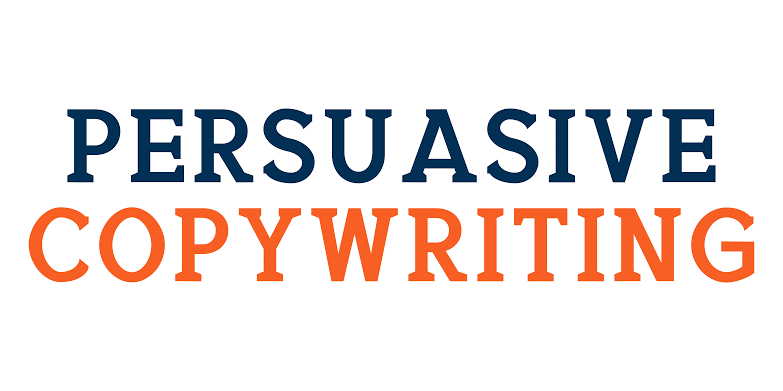In dynamic world of marketing and advertising art of persuasion is a fundamental skill that copywriters employ to influence consumer behavior and drive engagement. Understanding psychological principles behind persuasion enables copywriters to craft compelling messages. These messages resonate with their target audience. This article explores science of persuasion in copywriting. It delves into various psychological techniques and strategies that captivate readers. They compel them to take action.
Persuasion in copywriting goes beyond simply conveying information. It involves shaping perceptions. It elicits emotions and motivates audiences to make decisions. Whether creating advertisements, sales pitches or promotional content copywriters harness psychological insights. They create persuasive messages that resonate with the desires, needs and aspirations of their audience.
Psychological Principles of Persuasion
1. Reciprocity: The principle of reciprocity suggests that people feel obliged to repay favors or gifts. In copywriting, offering valuable content, free trials, or exclusive offers can trigger a sense of reciprocity, encouraging consumers to reciprocate by making a purchase or subscribing to a service.
2. Social Proof: Social proof leverages the tendency of individuals to conform to the actions and opinions of others. Testimonials, customer reviews, and endorsements from influencers or experts serve as powerful forms of social proof in copywriting, building trust and credibility with potential customers.
3. Scarcity: Scarcity taps into people's fear of missing out (FOMO) by emphasizing limited availability or time-bound offers. Copywriters often use phrases like "limited-time offer" or "while supplies last" to create urgency and prompt immediate action from consumers.
4. Authority: Authority involves using credible sources, experts, or influencers to validate claims and recommendations. By citing reputable sources, displaying certifications, or featuring endorsements from industry leaders, copywriters enhance the perceived authority of their messages and instill confidence in their audience.
5. Consistency: The principle of consistency suggests that people prefer to align their actions with their previous commitments or beliefs. Copywriters can leverage this by framing messages that encourage small initial commitments (e.g., signing up for a newsletter) which can lead to larger commitments (e.g., purchasing a product or service) over time.
6. Emotional Appeal: Emotions play a crucial role in decision-making, often guiding consumers' purchasing behavior. Effective copywriting evokes emotions such as joy, fear, nostalgia, or empathy to create a memorable and impactful connection with the audience. Emotional appeal can be achieved through storytelling, vivid imagery, or relatable narratives that resonate on a personal level.
Strategies for Effective Persuasive Copywriting
1. Know Your Audience: Understanding the demographics, interests, and motivations of your target audience is essential for crafting persuasive copy. Conducting market research, analyzing consumer behavior, and creating buyer personas can provide valuable insights into the preferences and pain points of your audience.
2. Highlight Benefits, Not Features: Effective copywriting focuses on highlighting how a product or service benefits the consumer rather than just listing its features. Clearly communicate how your offering solves a problem, fulfills a need, or enhances the quality of life for your audience.
3. Create Compelling Headlines and Hooks: The headline is the first impression of your copy and often determines whether a reader continues to engage with the content. Craft attention-grabbing headlines and hooks that pique curiosity, address a pain point, or promise a solution to capture the reader's attention from the outset.
4. Use Power Words and Persuasive Language: Incorporate power words and persuasive language that evoke strong emotions and prompt action. Words like "discover," "exclusive," "proven," and "guaranteed" convey confidence and appeal to consumers' desire for value and assurance.
5. Employ Storytelling Techniques: Storytelling is a powerful tool in copywriting that captivates audiences and makes messages more memorable. Use narratives, anecdotes, and case studies to illustrate how your product or service has positively impacted customers or solved real-world problems.
6. Call to Action (CTA): A strong call to action is essential for guiding consumers towards the desired action, whether it's making a purchase, subscribing to a newsletter, or signing up for a free trial. Use clear and compelling CTAs that communicate the next steps and create a sense of urgency or importance.
Ethical Considerations in Persuasive Copywriting
While persuasion is a fundamental aspect of effective copywriting, it is essential to uphold ethical standards and transparency in communication. Avoid misleading or deceptive tactics that manipulate consumer perceptions or exploit vulnerabilities. Maintain honesty, authenticity, and respect for the audience's intelligence to build long-term trust and loyalty.
Conclusion
In conclusion, the science of persuasion in copywriting combines psychological insights with strategic communication techniques to influence consumer behavior and achieve marketing objectives. By understanding and applying principles such as reciprocity, social proof, scarcity, authority, consistency, and emotional appeal, copywriters can create persuasive messages that resonate with their audience and drive meaningful engagement. By leveraging these techniques ethically and responsibly, businesses can build stronger connections with consumers, enhance brand credibility, and ultimately drive success in a competitive marketplace.
